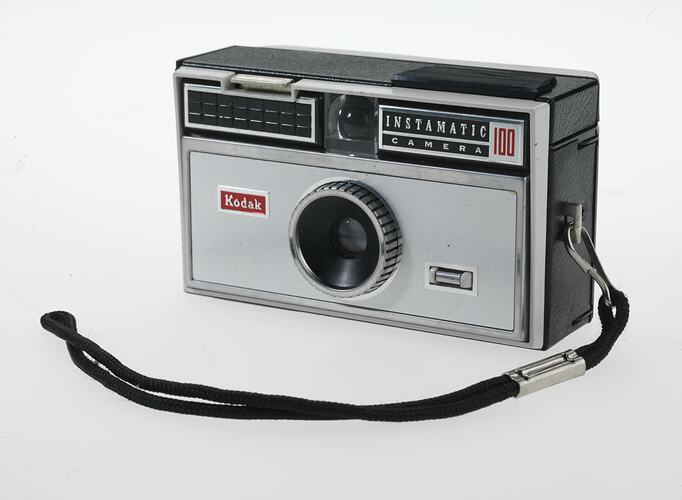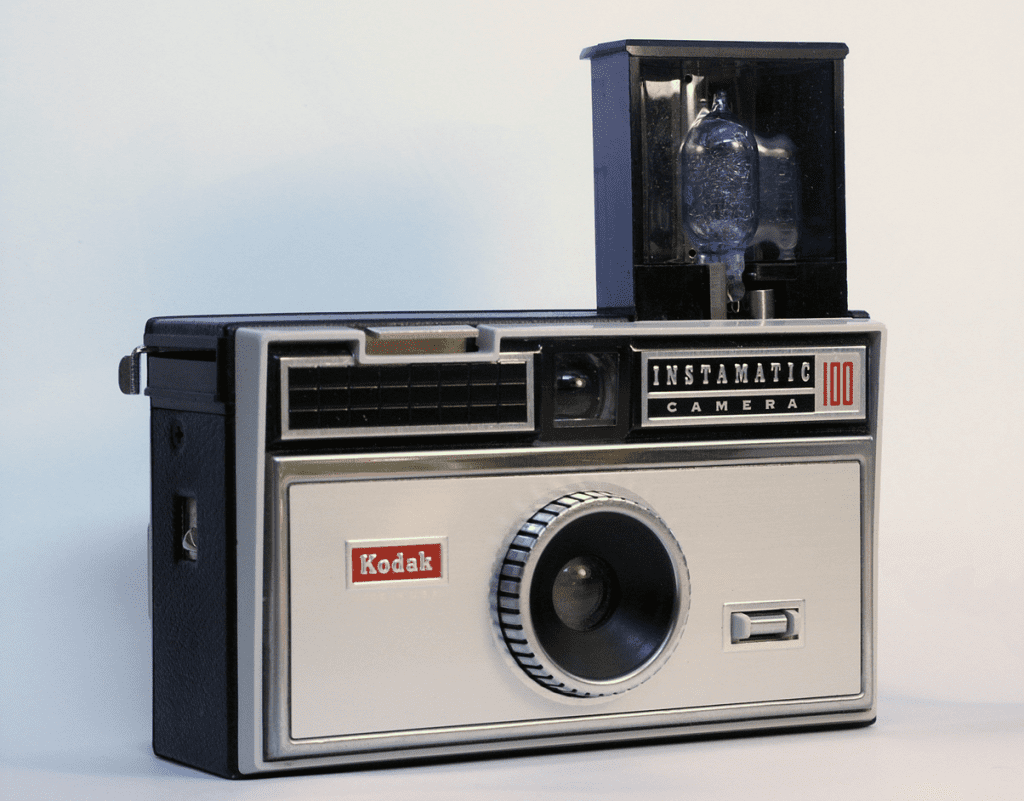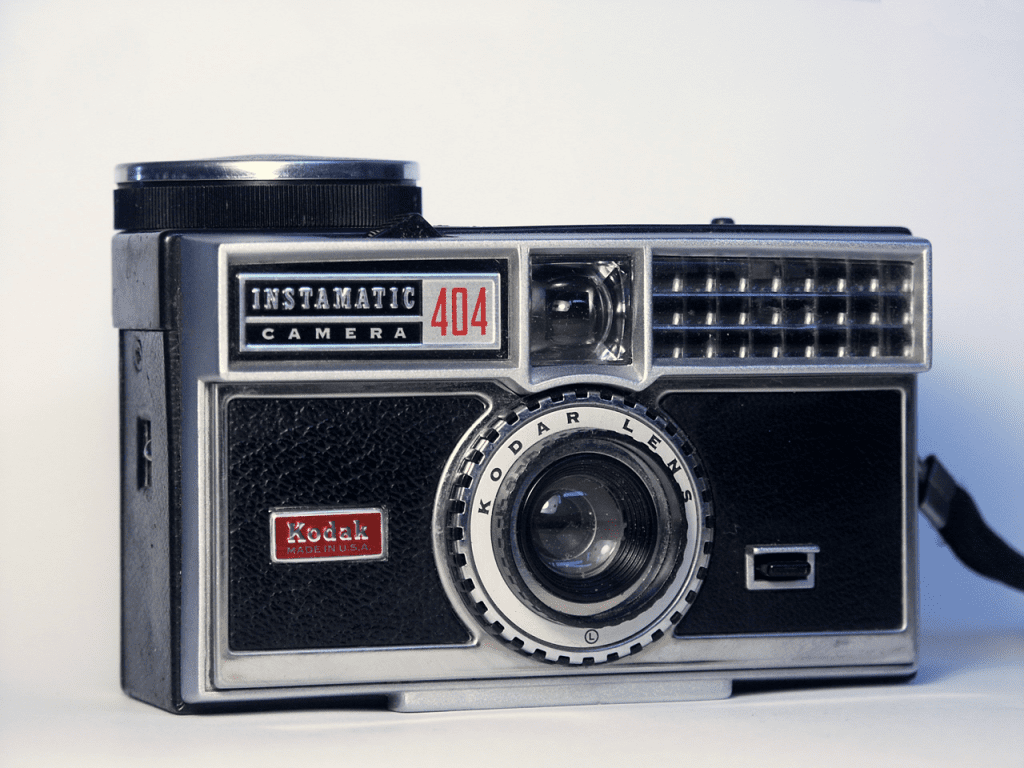The Kodak Instamatic series of cameras played a crucial role in making photography accessible to the masses. From its launch in the 1960s, the Instamatic became synonymous with simple, low-cost photography, leaving a lasting legacy in both technology and popular culture. In this article, we’ll explore the history, evolution, and influence of the Instamatic, as well as its impact on modern photography.
What Is the Instamatic Camera?
The Instamatic was a series of affordable, easy-to-use cameras introduced by Kodak in 1963. These cameras were designed to make photography more accessible by simplifying film loading, offering a compact design, and providing an easy-to-use interface.

Key Features of the Instamatic:
- 126 and 110 film formats: The Instamatic was the first to use Kodak’s 126 film format, later expanding to the smaller 110 film format.
- Cartridge-based film loading: The easy-load film cartridges allowed users to quickly and effortlessly load film, a significant innovation at the time.
- Affordable pricing: With prices starting at just $16, the Instamatic appealed to a broad audience, from families capturing memories to amateur photographers trying their hand at the craft.
The Rise of the Instamatic: A Cultural Phenomenon
The Instamatic series was an instant hit, making it one of Kodak’s most successful camera lines. Its simple design, combined with Kodak’s innovative film cartridges, made it possible for anyone to take photographs without technical knowledge.
1. The Launch of the Instamatic Series
The first model, the Instamatic 50, made its debut in the UK in February 1963, followed by the Instamatic 100 in the US a month later. The Instamatic 100 introduced a built-in flashgun for single-use AG-1 “peanut” bulbs, while the Instamatic 50 lacked this feature. These early models offered no adjustable aperture, focus, or shutter speed, but their simplicity made them immensely popular.
2. Expanding the Instamatic Lineup
The success of the initial models led to a rapid expansion of the Instamatic series. The line included:
- Instamatic 300: Introduced with a light meter for better exposure control.
- Instamatic 400: Added a spring-driven film advance mechanism.
- Instamatic 700: Featured adjustable focus and shutter speeds.
These cameras provided an easy-to-use interface for everyday photography, making them the go-to choice for families and casual users.
How Instamatic Changed Photography Forever
The Instamatic series brought significant changes to the world of photography. From technical innovations to influencing modern photography aesthetics, its impact is still felt today.
1. Democratizing Photography
Before the Instamatic, photography was often seen as a complex and expensive hobby. The simplicity and affordability of the Instamatic allowed people from all walks of life to capture their memories without needing extensive technical knowledge. This democratization of photography helped create a culture where everyone could participate in documenting their lives.
2. Revolutionizing Film Loading
The 126 film cartridge system was a breakthrough innovation. It eliminated the need for users to manually thread film onto spools, reducing the likelihood of errors such as incorrect loading or film jamming. This innovation made taking photographs far less intimidating for beginners, contributing to the widespread adoption of photography.
3. Transition to Pocket Instamatics
In 1972, Kodak introduced the Pocket Instamatic series with the new 110 film format. These cameras were smaller, more compact, and easily portable, making them convenient for everyday use. The 110 cartridge was even smaller than the 126, yet it maintained the same easy-load design. The Pocket Instamatic 60, the top model, featured a stainless-steel body, automatic exposure, and a four-element lens, showcasing Kodak’s continued push for better performance in compact cameras.
Why the Instamatic Became a Cultural Icon
The Instamatic wasn’t just a camera—it became a symbol of accessible photography, inspiring a generation of photographers and influencing modern visual culture.

1. Commercial Success
The Instamatic was an overwhelming commercial success, with over 50 million units sold between 1963 and 1970. This figure highlights the massive impact the Instamatic had on the global photography market. Kodak even gave away Instamatic cameras as part of promotional campaigns, further popularizing photography and driving demand for film.
2. Influence on Competing Brands
The Instamatic’s success led other camera manufacturers, like Canon, Olympus, Minolta, and Zeiss Ikon, to produce their own versions of 126 and 110 film cameras. While some of these models were more sophisticated and offered additional features, none could match the simplicity and affordability of the Instamatic, which had become the benchmark for consumer photography.
3. Pop Culture Presence
The Instamatic wasn’t just a technical marvel; it became a part of everyday life. It was often featured in advertising campaigns, movies, and TV shows, symbolizing the joy of capturing spontaneous moments. Its square image format and simple, geometric design even influenced the aesthetics of modern photography apps like Instagram, which incorporated similar visuals into its logo and filters.
The Decline of the Instamatic: A Changing Market
While the Instamatic was groundbreaking in its time, the rapid advancements in digital photography and other technological innovations eventually led to its decline.

1. The Shift to Digital Cameras
The rise of digital cameras in the 1990s and 2000s marked the beginning of the end for film-based cameras, including the Instamatic series. Digital cameras offered instant review of photos, higher image quality, and more advanced features, making them more appealing to consumers.
2. The End of Film-Based Photography
Kodak eventually discontinued the Instamatic series as demand for film-based photography dwindled. The last Instamatic sold in the US was the X-15F, which remained on the market until 1988. The shift towards digital photography meant that the once-beloved Instamatic was no longer a practical choice for most users.
The Legacy of the Instamatic: Its Lasting Impact
While the Instamatic may no longer be in production, its legacy endures. It laid the groundwork for point-and-shoot cameras and helped cultivate a culture of everyday photography.

1. Inspiring Modern Photography Apps
The simplicity and square format of the Instamatic inspired the creators of photography apps like Hipstamatic and Instagram. These apps aimed to recreate the nostalgic feel of vintage photography, making users’ digital photos look like they were taken with toy cameras from the past.
2. A Symbol of the Golden Age of Photography
For many, the Instamatic represents a simpler era of photography—a time when taking a photo was as easy as pointing and clicking. It holds a special place in the hearts of photography enthusiasts and collectors, symbolizing the golden age of analog cameras.
Conclusion: The Instamatic’s Enduring Influence
The Kodak Instamatic was more than just a camera; it was a cultural revolution that made photography accessible to millions. Its simple design, innovative features, and broad appeal cemented its place in history as one of the most influential cameras of all time. While the Instamatic may be a relic of the past, its spirit lives on in today’s digital photography, reminding us of an era when capturing memories was as easy as pressing a button.


